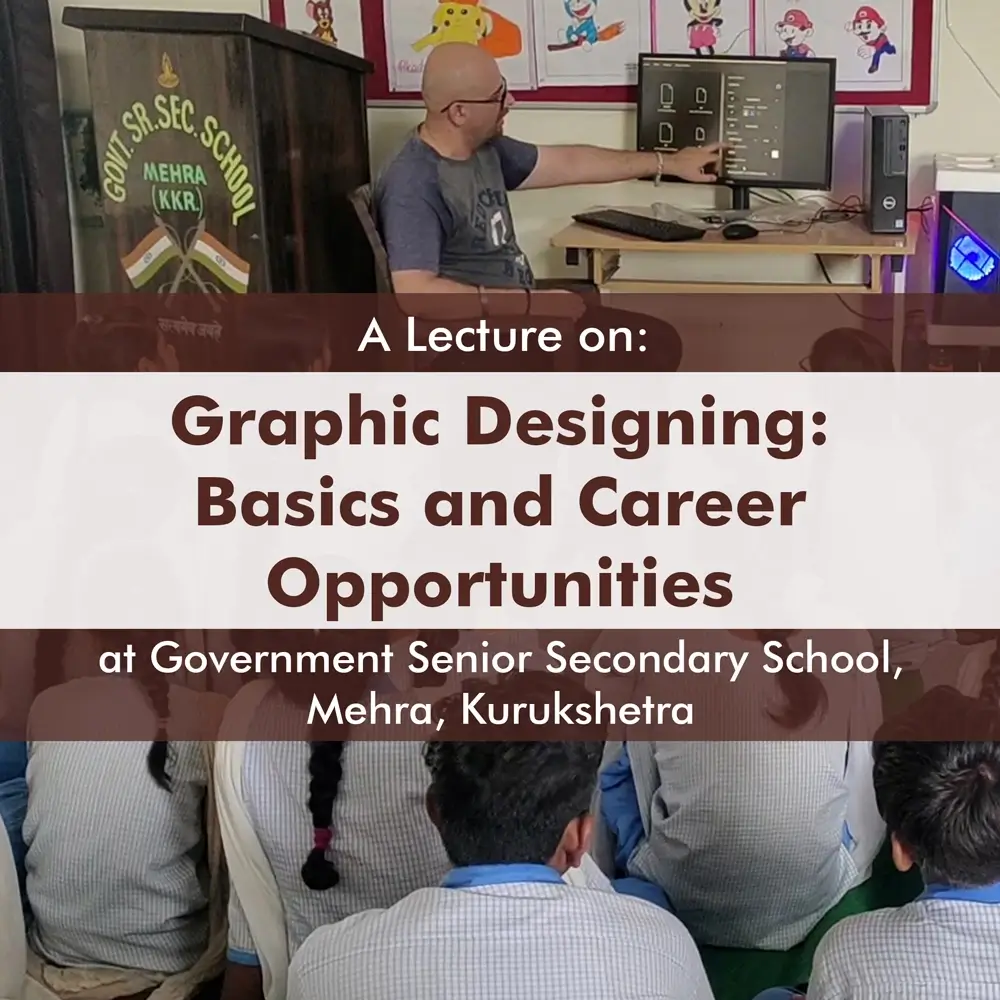Powerful Web Designing Course
Learn Web Designing Skills and Become a Successful Web Designer, UI / UX DesignerThis is a page dedicated for Web Designing Course. If you are looking for Website Designing Services, Portfolio or Web Designing Blog, click below:
Welcome to our Powerful Web Designing Course!
Are you fascinated by the ever-evolving digital landscape and eager to create stunning, user-friendly websites that captivate audiences? If so, you’ve come to the right place! Our Web Designing Course is designed to equip you with the knowledge and skills needed to craft visually appealing, functional, and responsive websites that leave a lasting impression on users.
Our Comprehensive Web Designing Course is carefully curated to cater to both beginners and experienced individuals seeking to enhance their web designing prowess. Whether you’re an aspiring web designer, graphic artist, or entrepreneur, this course will empower you to turn your ideas into immersive web experiences.
Why to Learn Website Designing?
Benefits to Learn Web Designing, UI / UX DesigningLearning web designing offers a multitude of compelling reasons why individuals should consider acquiring this valuable skillset. Here are some of the key reasons why learning web designing is a beneficial and rewarding endeavor:
-
Creative Expression: Web designing allows you to unleash your creativity and artistic flair. You can bring your ideas to life, create visually appealing layouts, and design captivating user experiences on the digital canvas.
-
High Demand: In today’s digital era, businesses and individuals alike need well-designed websites to establish their online presence. The demand for skilled web designers continues to grow as companies seek to enhance their websites to attract and retain customers.
-
Career Opportunities: Web designers are in high demand across various industries, including IT, e-commerce, media, advertising, and more. Learning web designing can open up diverse career paths, ranging from working for a company to freelancing or starting your own web design business.
-
Versatility: Web designing skills are versatile and can be applied to a wide range of projects beyond websites, such as creating mobile apps, social media graphics, online advertisements, and email templates.
-
Personal Projects: Learning web designing allows you to design and develop your own websites or blogs. Whether you want to showcase your portfolio, share your interests, or start an online business, web designing empowers you to bring your ideas to life.
-
User Experience (UX): A well-designed website not only looks good but also provides an excellent user experience. Learning web designing enables you to create user-friendly interfaces that engage visitors and make navigation intuitive.
-
Stay Current with Technology: The web design industry is continually evolving, with new design trends, tools, and technologies emerging. Learning web designing keeps you updated with the latest advancements, ensuring your skills remain relevant and in-demand.
-
Collaborate with Developers: Understanding web designing allows you to collaborate effectively with web developers. Clear communication and a shared understanding of design principles lead to better teamwork and more seamless project outcomes.
-
Freelancing Opportunities: Web designers often have the flexibility to work as freelancers, providing services to clients globally. This flexibility allows you to manage your schedule, work remotely, and choose projects that align with your interests.
-
Personal Growth: Learning web designing challenges you to think critically, solve problems creatively, and constantly seek improvements in your work. It fosters personal growth and a sense of accomplishment as you see your skills progress over time.
In conclusion, learning web designing offers a host of opportunities and benefits, from personal creativity and career growth to contributing to the digital landscape. Whether you’re a student, a professional looking to upskill, or someone eager to explore the world of design, web designing is a valuable skill worth mastering in the modern digital age.
Who Can Learn Web Designing?
Web designing is a versatile skill that is accessible to a wide range of individuals. There are no strict prerequisites or limitations to learning web designing. Here’s a list of people who can benefit from and are eligible to learn web designing:
-
Beginners: Anyone with little to no prior knowledge of web designing can start learning from scratch. Web designing courses often cater to beginners, providing step-by-step guidance to build a strong foundation.
-
Students: High school students, college students, or individuals pursuing higher education can learn web designing to enhance their skills and make their profiles more attractive to potential employers.
-
Working Professionals: Professionals from various fields can learn web designing to diversify their skillset and boost their career prospects. This includes individuals in marketing, content creation, business development, and more.
-
Entrepreneurs: Aspiring entrepreneurs can benefit from learning web designing to create and manage their business websites, saving costs on hiring external web designers.
-
Graphic Designers: Graphic designers can expand their expertise by learning web designing, enabling them to create interactive web elements and digital experiences.
-
Freelancers: Freelancers working in various industries can add web designing to their service offerings, providing web design solutions to clients and expanding their potential client base.
-
Artists and Creatives: Artists, photographers, and other creatives can use web designing to showcase their work through personal portfolio websites or online galleries.
-
Career Changers: Individuals looking to transition into a new career path can learn web designing as a stepping stone to enter the fast-growing tech and creative industries.
-
Non-Technical Background: Web designing does not necessarily require a background in programming or computer science. It focuses on design principles, user experience, and visual aesthetics.
-
Hobbyists: Even if you have no specific career aspirations, learning web designing can be a fun and engaging hobby. It allows you to create personal websites, blogs, or online projects related to your interests.
-
Stay-at-Home Parents: Stay-at-home parents can learn web designing to explore remote work opportunities or even create websites to share their experiences or interests.
In summary, web designing is open to all individuals, irrespective of their background or age. If you have a passion for creativity, an interest in digital design, and a willingness to learn, you can embark on the exciting journey of learning web designing and unlock a world of possibilities.
Contents of Web Designing Course
Module 1: Introduction to Web Design
- Understanding the role of a web designer
- Exploring the history and evolution of web design
- Recognizing current trends and best practices in the industry
- Creating Mock Ups in Adobe XD, Adobe Photoshop. Figma etc.
Module 2: HTML Fundamentals
- Learning the basics of Hypertext Markup Language (HTML)
- Creating the structure of a webpage with HTML tags
- Incorporating text, links, images, and lists into your web pages
Module 3: CSS Styling
- Understanding Cascading Style Sheets (CSS) and its role in web design
- Applying styles to HTML elements for layout and design
- Exploring CSS properties, classes, and IDs to customize the appearance of web pages
Module 4: Responsive Web Design
- Embracing the mobile-first approach to web design
- Creating responsive layouts that adapt to various devices and screen sizes
- Utilizing media queries and flexible grids to ensure a consistent user experience
Module 5: User Experience (UX) Design
- Defining user experience and its significance in web design
- Conducting user research and analysis for effective UX design
- Implementing UX principles to enhance usability, accessibility, and user satisfaction
Module 6: Web Graphics and Multimedia
- Optimizing images for the web without compromising quality
- Incorporating multimedia elements such as audio and video into web pages
- Understanding the impact of graphics and multimedia on user engagement
Module 7: Web Design Tools and Software
- Exploring popular web design tools such as Adobe XD, Sketch, Figma, and more
- Hands-on experience with web design software for creating prototypes and mockups
- Integrating design tools into your web design workflow for increased productivity
Module 8: Web Typography
- Choosing appropriate fonts and font combinations for better readability
- Understanding the importance of typography in conveying the website’s tone and message
- Implementing web-safe fonts and web font services for cross-platform compatibility
Module 9: Web Design Project
- Applying all the concepts learned throughout the course to create a complete web design project
- Combining creativity, functionality, and responsiveness to design a professional website
- Presenting and showcasing your web design project to receive constructive feedback
Module 10: Web Design Optimization and Launch
- Analyzing website performance and optimizing for speed and efficiency
- Testing your web design across different browsers and devices
- Planning and executing the launch of your web design project
Minimum Theory Maximum Practical
Interview Preparation
Regular Assignments
Job Placement Assistence
Enroll Now and Become a Successful Web Designer
Boost Your Career!
Enrol Now




